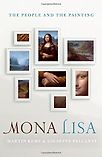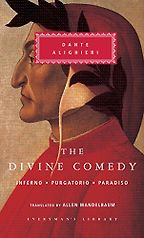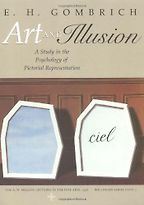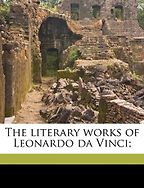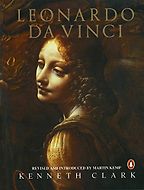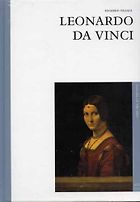Firstly, congratulations on your Leonardo da Vinci book in collaboration with Giuseppe Pallanti. The blurb announces boldly that we’re to learn the secrets at the heart of the world’s most iconic work of art. Of course, an air of mystery is perhaps fitting for a book with a subject like Leonardo da Vinci, whose life and work are suffused with myth and speculation. And yet, almost as a final punctuation in your closing paragraph, you state that “There is one Mona Lisa. It was painted by Leonardo. And it is in the Louvre”. I love this passage! Which summarises so well the spirit of the book. The facts speak for themselves, and they lead us to some very grounded conclusions about the painting and also about Leonardo.
That’s exactly right. That was the nature of the endeavour. Obviously, the publicity of Leonardo cannot dodge Dan Brown and The Da Vinci Code. From people I called ‘Leonardo Loonies’, I get sent letters probably every week saying they’ve really cracked the secret of the Mona Lisa, ranging from alligators in the landscape to Persian messages of Nostradamus’ prophecies hidden in the painting. So, that element of mystery is there.
There is also an important element of mystery that is embedded in the picture, that is to say, the ultimate unknowingness of the beloved woman. There, Leonardo’s technique induces a sense that we think we can see more than we can. We, then, as viewers, fill it in. There’s this genuine sense that he is leaving something intangible, ineffable, unsaid. So, there is a genuine element of mystery which he has contrived.
The fact that the Mona Lisa in some ways was the product of an unspectacular, almost mundane middle-class Renaissance milieu, makes the cultural phenomenon of the painting that much more remarkable. This relatively humble soil was able to give root to this extraordinary flower. In reading the book, I found myself thinking that you could say something similar about Leonardo da Vinci himself.
The portrait is extraordinary because, at that time particularly, portraits were portraits. They were of interest inherently because of the value, status, or public profile of the person who is being portrayed. So, to have this sort of painting of a bourgeois woman and for it to become famous almost immediately is extraordinary.
If you’re portraying the French King or Queen Elizabeth I of England or George Washington, then it’s clear why those portraits are famous – because they are portraits of important figures. So, for a picture to achieve that status early and to retain that status when she is of no significance in the broader patterns of the world – she’s of significance to herself, her family, and her beloved ones but not beyond that – is very extraordinary.
Let’s turn to the reading list for our discussion of a ‘non-mythical’ Leonardo. To set the stage, let’s begin with a compatriot of his. Why is Dante important for us to understand Leonardo’s art, and perhaps his scholarly and scientific work as well?
I think Dante is of importance to Leonardo in two respects. One is a fairly obvious one in that he really set in train – not wholly individually but he gave a great impetus to – the standard Florentine poetic genre of the beloved lady. In his work, Beatrice is never really somebody he knows that well but she is idealised and sublimated into this extraordinary object of rarefied desire. He set in motion a tradition that goes through Petrarch and beyond, and one that was still thriving in the Leonardo courts.
As we know, poets wrote about Leonardo’s portraits using this language. So, that Dantesque figure of the beloved lady goes into a Leonardo portrait and then is extracted – as it were – by the poets who were writing about Leonardo. It’s not been noticed very much before but it is obvious to the close observer.
The other aspect to it is that Dante is the supreme poet-natural philosopher. We know about Dante’s imagination, we know his great storytelling abilities, but we tend to take into account rather less that in The Divine Comedy and in all his works – the Convivio (the Banquet) not least – there is an enormous amount of learning about objects, about physics, about the behaviour of things in the natural world and about light, above all. The Paradiso is about light. And also about the act of seeing.
So, I think, for Leonardo, it was not just that Dante was the most potent poet he could read but that he set in train a sense of the science of art; the poetic imagination – ‘fantasia’ as Dante and Leonardo called it – is compatible with ‘intelletto’ – with the intellect – and that these are two strings to the poet’s bow. So, it’s the ability to understand how the natural world operates and the ability then to transmute that into an imaginative realm.
Natural philosophy as a precursor to what we would regard as hard science….That leads quite naturally to a discussion of E.H. Gombrich’s Art & Illusion: A Study in the Psychology of Pictorial Representation (1960) where he discusses art as a sort of experimental process – an iterative and improvised pursuit – that seems to echo what you’ve described as Dante’s marrying of poetry and science: the transformation of knowledge into poetic vision.
Absolutely. Gombrich was a kind of mentor of mine; I never studied with him, but he was always immensely encouraging. There are a number of people who are pressing on with art-science agendas and who are interested – both historically and in contemporary terms – with issues of seeing and knowing, which lie behind Gombrich’s The Story of Art. It’s the fact that you don’t just see things and know what they are; you have to have a hypothetical framework, you have to have an interpretive framework, to get leverage on the world. That was very important. I trained as scientist so, in a sense, I knew about hypotheses but less about the philosophical underpinnings which meant that the standard notion of empiricism wouldn’t do the job, that you need schemata models, you need a framework that you can then modify heroically.
For Gombrich, Leonardo was the historical embodiment of that process. He was somebody who had this amazing stock of schemas inherited from the art which he knew but an extraordinary ability to work with the grit of observation and the imagination to see that the old wisdom needed challenging, both on grounds of empirical testing but also on grounds of theoretical constructions. In Gombrich’s “making and matching” formula, there’s the idea that you basically have a way of portraying things; if I wanted to paint a portrait of your face, I have a series of pictorial motifs that I can use and combine to do it. “Matching”, then, is the process which is non-obvious and much more difficult than people realise: to make your eye look like your eye, rather than the general eye which I know how to draw.
If you read Gombrich’s writings – The Story of Art not least but other essays of his as well – then Leonardo is like the light cavalry. When Gombrich gets into a difficult area of argument, then the Leonardo light cavalry come racing over the hill towards the enemy to win the argument.
Importantly for me, Gombrich also gave a sanction for looking at non-art as being as profound as high art in terms of its potential analysis. He would put an advertisement for a rotary shaver beside Raphael’s Madonna della sedia because they’re both using rounds. That sounds trivial but he makes a lot of it. So, that ability to fashion a visual history rather than more restrictedly an art history is of immense importance, and is very much in the spirit of Leonardo’s endeavour.
If we consider the way that the framework is deployed to make sense of and accentuate the aesthetic qualities of our experienced environment, some would argue that this is what sets Leonardo apart from a long lineage of extremely talented and extremely visionary artists. Would you say that’s one reason why he’s had such lasting influence and importance?
I think he tries to embed in painting all the knowledge – this extraordinary wide ranging encyclopaedic knowledge which he gleans. He wants painting to be a recreation of the visual world on the basis of this encyclopaedic understanding. Ultimately, it’s an unrealisable dream. Even film and moving images can’t do everything. One of the difficulties he had with finishing paintings, is that the ultimate ambition to make the painting into a universal picture, to carry all this immense baggage of knowledge and fantasy, is in a way unrealisable. There’s a kind of unrealistic aspect to the agenda which is always recognisable with Leonardo.
I would pull in here the drawings as well as the paintings. No one used drawing in as many ways to explore the nature and the structure of the world, including the things we have come to take for granted like solid sections and exploded diagrams – where you pull something apart to see how it joins up. There’s just this sheer range of visual means he uses in drawing and painting to investigate how the world works, how it looks, and also how we see it. Very unusually for his time, he is interested particularly in the science not just of what we see but of why something looks the way that it does in terms of our acts of seeing.
Under Gombrich’s rubric, the culture informs artistic production. So we stand to learn a lot about Leonardo’s milieu in reading from primary sources. The books you’ve chosen are Jean Paul Richter’s The Literary Works of Leonardo da Vinci (1883), and Edoardo Villata’s Leonardo da Vinci – i documenti e le testimonianze contemporanee (1999). Why these two compendia specifically, when the Leonardo scholarship is so vast? Even the primary source material is sprawling, and not even all of Leonardo’s notebooks have survived.
I always emphasise primary sources. If you teach Leonardo, you are faced with this enormous amount of material. My Leonardo library is too big for my house; it’s in the research hall of the history faculty, and there are bigger libraries than that obviously in professional libraries. So, what do you do? The answer, for me, is go to the primary sources as your first port of call: get a sense of them, naturalise yourself in this extraordinary ability he has to cross boundaries, to move fluidly from the motion of hair to the motion of water and so on, and get a feel for that.
Obviously, you need to have an interpretive framework. Historians and accounts that one can recommend range from something like Kenneth Clark’s very beautiful biography which is about Leonardo as an artist – it doesn’t do more than that – to works which tackle different aspects of his intellectual legacy. What has tended to be missing, at least when I did my first synoptic book on Leonardo da Vinci, was a synthetic gathering together of all these things.
We’ve got really good material on Leonardo as an anatomist, Leonardo as a geologist, Leonardo’s optics, Leonardo’s perspective etc., but he became a plural or dissembled figure of Leonardo as this or Leonardo as that…. My mission has been an attempt to put Leonardo back together again and say – what is the core of this person’s thinking? What is the core of this person’s artistic personality? And how far is it common across all this enormous range of diverse pursuits?
Are there particular segments or chapters or letters that provide a unique insight or summary understanding of who Leonardo was and what made him tick?
It is a tough one but let’s do three passages from the Richter book. One is the letter Leonardo wrote to Ludovico Sforza – Ludovico il Moro, the ruler of Milan – and he’s selling his services. This is a draft letter, it presumably went in a fairer copy to Ludovico, but he details all the military things he can do. He can build bridges for crossing moats and he can dig tunnels and he can construct weapons the sort of which are outside the common usage, as he puts it. It gives an idea of this slightly crazy ambition that he has.
At the end, he says by the way, also in sculpture and painting, I can do things as well as anyone else can and will be happy to do the equestrian memorial – the rider on the horse – for your father which I happen to know you want doing. That’s a flavour of the man who was insanely ambitious, very willing to promote himself and recognised he was special. But it’s endearing, this sheer enthusiasm of listing all the different things that he can do, as though he can’t get it out fast enough.
The second one would be something from the “Paragone” – the comparison between the arts. This was a set piece debate he indulged in at the court of Ludovico il Moro in Milan. It was a kind of courtly knockabout dispute between poets, musicians, sculptors, painters, and writers more generally. And he was very rude about poetry. It was a serious challenge: they were challenging for the attention of the duke, challenging for prestige in the court, and they were challenging for salaries. And Leonardo is determined to give poetry a tough time.
He parades these arguments – some of them really pretty tenuous – and ultimately comes down to the assertion that the ear is not as good as the eye. The eye is the great vehicle through which we see the world and it’s the primary sense. He then assigns a descriptive role to poetry and says that poetry cannot describe a battle as well as a painting can. Which if taken as a visual description, is undebatable. But is poetry really about visual description? So, that gives you a sense of Leonardo in a court: very brilliant, very agile, and willing to bend the evidence rather creatively in his direction and to his advantage.
The other passage would be one of the later writings ‘On the Eye’ from Manuscript D which is the in the Institute de France. I’m not going to give you a specific passage – they are quite a number of them – and the Richter volumes have very brilliant indices, so you can go and see where the Manuscript D Dell’occhio (‘On the Eye’) is. That is relatively well into his career, it is around 1507-1508, and he was to die in 1519. It deals with the complexities of seeing. There is geometry out there, and he is in thrall to geometry. Mathematics, but above all geometry, is the key to understanding the universe, much like Galileo said “the book of nature is written in mathematics”.
For Leonardo, it is written primarily in geometry. So, there’s enormous attention to working out the reflection, refraction, aerial perspectives of objects, and how the atmosphere works and so on. But he says, and this is relatively later in his life, that we have to understand how the eye works in how we see things. The eye, he observes, is optically a very complicated instrument. He doesn’t have a focussing lens which limits what he can accomplish with his explanation. Before Kepler in the early 17th century, there’s no sense of the lens as an active focussing device. So, he tries to work out how the components of the eye – the humours as they were called: the aqueous humour, the liquid stuff, and the crystalline humour or more gelatinous stuff like the lens in particular – how these combine to create the optics to get an image.
Five Books interviews are expensive to produce. If you're enjoying this interview, please support us by donating a small amount.
His conclusion is that we can see things more or less definitely, if we put them at the right position in relation to our eye, but he says that we never see the true edge of any body. So, in a way, the geometry produces an indefiniteness – an uncertainty – and he knows, for instance, that if we’re inside a building it looks perfectly light inside but if you go outside the building you can’t see inside because it’s too dark. Leonardo is interested in the role played by our perceptual apparatus. This is very remarkable because he’s then applying that to our systems of knowledge and saying that we really need to know not just what’s out there and what we think we’re seeing, but we need to know how we’re seeing it.
Most people would think of Leonardo principally as an artist – famous for the Mona Lisa amongst other works – but he seemed to have been quite scathing not only about poets but also his painterly rivals. While most praise was reserved for architects who, I suppose, were the civil scientists of the age. Your own research has been about the relationship between scientific visions of nature and how these are applied to art in practice. In the book Leonardo da Vinci Kenneth Clark describes at length and in very graceful language Leonardo’s constant negotiation between science and symbolism. This monograph was first published in 1939. This is still a canonical work for you in Leonardo studies?
Yes. Leonardo da Vinci is a beautiful book. And Leonardo has been fortunate in some of the writers who have tackled him, like Walter Pater and like Théophile Gautier in France. He has attracted some fine pens to write about him. Kenneth Clark is up there with them. In terms of art history, Clark is rather sniffily regarded by academics. He’s been called Lord Clark of Civilisation because of his famous television series. He has also written Landscape into Art and The Nude which he saw as very much about the intellectual history of art. They’re regarded as popularising. Now, for me, communicating in a broader framework is terrific and to do it as well as Clark is wonderful. But there is a natural sniffiness amongst academics when he rides roughshod over some beloved subtleties that they hold dear.
The book as a whole conveys wonderful shape to Leonardo’s art and life. And Clark is more right about aspects of his science and engineering than he has any right to be. He kept clear of the science, he didn’t really tackle it head on, yet via the art and via the drawings, he gets an enormous amount right about Leonardo’s scientific opus. There’s also his great catalogue, which he did before the monograph, of the drawings at Windsor Castle which holds the greatest set of Leonardo drawings. Most of the anatomical drawings for example are at Windsor.
If you look at what he says about them, even when he doesn’t really deal with the science, he gets things extraordinarily right by intuition. Clark had that instinctive penetration into how Leonardo worked even when he was short of detailed knowledge of the area that he was looking at. To me, that’s a testimony of a certain kind of intuitive insight; having got a toehold Leonardo’s art, he was able to make more of the rest of Leonardo’s work than he really should have been able to do.
At one point, he writes that “there is a Leonardo for every generation”. In Leonardo’s approach to science and art, and the interrelation of the two, could Leonardo’s oeuvre be seen as an antidote to some of the very reductionist thinking that characterises many disciplines, compartmentalisation in the academy, and even in the ways that our daily lives seem to have become hyper-specialised? Do we need to recover this Renaissance notion of the interconnectedness of human knowledge, be it scientific, aesthetic, or otherwise?
Absolutely, yes. He was a lateral thinker to a kind of pathological degree. He couldn’t be contained in an area without seeing its implications for other areas. But it has to be done on a different basis now. In Leonardo’s era, though you couldn’t know everything about everything, this universal knowledge – that is to say, understanding the rudiments of physics, optics, anatomy and so on – could potentially be understood to an effective level by someone with Leonardo’s ambitions. And he wasn’t the only person who aimed at universal understanding. Roger Bacon in the middle ages was the Doctor Mirabilis who aspired to universal wisdom.
A theory has been advanced that the last human to have known everything – to have grasped all knowledge – was Goethe. Since then, the production of knowledge has outstripped our ability to digest and retain it.
Yes, Goethe is a supreme manifestation of that ability to work across boundaries and, indeed, to make your understanding of one area stronger because you’ve really got a sense of what is analogous elsewhere. Hermann von Helmholtz, the nineteenth-century physicist and physiologist is rather good as well and rather underrated. We should at least be able to understand what is going on in other areas, even if we can’t be experts on them.
I reviewed a book on quantum mechanics for the Times Literary Supplement which, in a sense, is barmy but it was about the beauty of quantum mechanics. Could I teach students about quantum mechanics? Perhaps not in ways that would be conducive to work in the laboratory. However, I would argue that whatever the discipline, we should know the nature of the enterprise: what kind of thing is going on, what criteria are being used, and so on.
Above all, in terms of Leonardo’s search for universal knowledge, he relies upon a profound respect for the orders of nature and how nature works. He doesn’t see us as separate from that natural world. We are in our bodies. As a microcosm, we embody the nature of the wider world. We are locked into its imperatives, and into how nature works. If you’re a canal engineer and you’re trying to alter the flow of rivers, the way to do it is to work in a friendly and cooperative way with the nature of water, rather than trying to push it around.
Leonardo has a profound respect for the order of nature and the human being’s integral place in that. There is a big message here, which is embedded in that notion of trying to get a universal understanding of how nature works.
In an age where our access to and perception of the world is increasingly being mediated by silicon and glass and software, what place is there for a da Vincian method?
Since we did the Leonardo show at the Hayward Gallery in London in 1989, I’ve been immensely interested in getting Leonardo to talk to computers, not just as a database but in thinking how we can effectively put computers in dialogue with Leonardo. If you look at Leonardo’s drawings, he clearly wanted them to move. There’s a clearly an inherent sense of animation. For our show at the V&A, I worked with a very brilliant animator called Steve Maher and we animated some of Leonardo’s drawings to tremendous effect. We found that some of his serial drawings – drawings of serial movement – just needed smoothing out; he got the key stages.
For 2019, I’m talking further to Steve for the five-hundredth anniversary of Leonardo’s death about doing a virtual reality reconstruction of aspects of Leonardo. Now, that doesn’t mean to say that he anticipated computer graphics or whatever, but it’s a question of what is inherent in his work and how it can be put into a dialogue with the new media, which he would have been completely sold on. This is not – I hope – an anachronistic enterprise. We are always looking back. We also have to be careful as historians that we’re not manipulating the historic Leonardo and coming up with something which is simply a mirror of our own time. But, provided we’re responsible about that dialogue, then I think it can be immensely stimulating and good public communication as well.
So, very much a Renaissance man for the digital age as well?
People often ask me what would Leonardo be doing if he were around at the moment? which is unanswerable in a way. I say he would certainly be in moving media. He would be doing something with images that move and with virtual reality. He would have been spectacularly impressed with that.
Also recommended on Five Books:
Five Books aims to keep its book recommendations and interviews up to date. If you are the interviewee and would like to update your choice of books (or even just what you say about them) please email us at [email protected]

